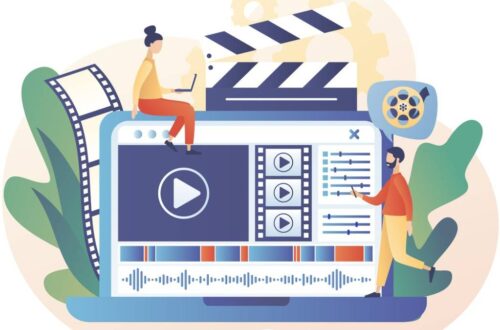Editing and proofreading have long been distinct pillars in the writing and publishing world. Editing traditionally addresses clarity, structure, and meaning, while proofreading ensures surface accuracy and correctness. However, with rapid technological advances, especially in AI and language processing, these definitions are blurring. Tools like Grammarly, ChatGPT, and ProWritingAid are changing how people perceive and perform these tasks. This article explores how technology is reshaping the boundaries, expectations, and processes of editing and proofreading in today’s digital environment.
Traditional Definitions
Understanding Editing
Editing involves revising content to improve overall quality. It addresses structure, tone, clarity, logical flow, and sentence construction. There are multiple levels:
- Developmental Editing: Focuses on ideas, structure, and argument flow, often reorganising entire sections.
- Substantive or Structural Editing: Revises paragraphs and sentences for coherence, logical development, and style.
- Copyediting: Ensures grammar, word choice, consistency, style adherence, and factual accuracy.
Understanding Proofreading
Proofreading is the final stage of the writing process. It focuses on surface-level errors such as typos, punctuation mistakes, minor formatting issues, and grammatical slips. Unlike editing, it does not change meaning or structure. It polishes a near-final draft before publication, submission, or printing.
The Blurred Lines Between Editing and Proofreading
Overlap of Tasks
In practice, many professionals, students, and writers perform editing and proofreading simultaneously, reviewing both meaning and mechanical accuracy. Freelance editors often provide light proofreading within copyediting. Academic proofreading often includes minor editing suggestions for clarity and conciseness, merging definitions.
Perceptions in Different Contexts
In publishing, these are distinct roles with separate billing. In freelance markets, clients often request “proofreading” expecting full editing. Technological tools are accelerating this merging by combining suggestions for meaning, grammar, and tone in a single process.
Technological Tools and Their Impact
AI and Grammar Checkers
Basic grammar checkers like Grammarly and Microsoft Editor have evolved into AI-powered writing assistants. They now offer:
- Grammar and spelling correction (proofreading tasks)
- Tone suggestions, conciseness, clarity improvements (editing tasks)
- Readability scores, sentence rephrasing, and synonym suggestions
Advanced AI Writing Assistants
AI tools such as ChatGPT and Jasper generate and refine entire texts. Users input prompts to:
- Rephrase sentences for clarity and formality
- Adjust tone for different audiences
- Summarise or expand text logically
- Rewrite entire paragraphs to align with specific goals
These tasks go beyond proofreading into substantive editing, blurring professional boundaries further.
Specialised Editing Software
Tools like Hemingway and ProWritingAid analyse sentence complexity, passive voice, adverb use, and readability. They suggest structural changes, simpler phrasing, and style refinements while simultaneously checking grammar and punctuation.
Changing Definitions in Practice
Editing and Proofreading as a Single Automated Process
For non-professional users, AI has merged editing and proofreading into an integrated, automated service. Students, bloggers, and early-career writers often use an essay writing service like EssayShark alongside tools like Grammarly for both proofreading and editing suggestions.
Rise of Self-Editing
Writers now self-edit with AI before seeking human editors. This reduces time and cost for professional services but shifts expectations – editors now receive cleaner drafts but must focus on higher-level improvements and human nuances.
Reduced Demand for Proofreading-Only Services
As grammar and spellcheck become automated, proofreading-only services are declining in demand, pushing professionals to expand into editing, coaching, and structural consulting to remain competitive.
Benefits and Limitations of Technology in Editing and Proofreading
Benefits of Technological Tools
- Speed and Efficiency: Instant grammar checks and clarity suggestions save time.
- Accessibility: Non-native speakers gain confidence in writing professionally.
- Cost-Effectiveness: Freemium tools provide basic services at no cost.
- Consistency: Automated checks ensure style consistency throughout documents.
Limitations of Technology
- Lack of Contextual Understanding: AI may miss author intent, subtle meaning, humour, or cultural context.
- Inability for Developmental Editing: Tools cannot reorganise ideas logically without guided input.
- Over-Reliance: Excessive use can diminish writers’ editing and proofreading skills over time.
- Errors and Misinformation: AI suggestions are not always accurate and require human verification.
Implications for Professionals
Adapting Services
Professional editors and proofreaders must adapt by:
- Offering higher-level developmental editing and manuscript critiques
- Providing personalised insights and cultural context AI cannot replicate
- Combining technology with human expertise to enhance quality
Integrating AI into Workflow
Many editors now use AI to pre-check drafts, saving time on mechanical corrections and focusing their energy on meaning, flow, and author voice preservation.
Ethical Considerations
Editors must disclose AI use if it forms part of their process. Writers must also verify AI outputs for accuracy, especially in academic or factual contexts, to avoid unintentional misinformation.
The Future of Editing and Proofreading
Evolving Definitions in Academia and Publishing
Universities and publishers are revising guidelines to address AI-assisted editing. Some institutions prohibit AI use in thesis editing; others embrace it under human supervision. Publishing houses are adopting AI to assist in initial copyediting but maintain human final checks for quality assurance.
AI-Human Collaborative Models
The future likely lies in AI-human collaboration, where AI handles mechanical tasks and editors focus on structural, stylistic, and developmental improvements. Writers will rely on self-editing tools before submitting to professional editors for final polishing.
Emerging Skillsets for Editors and Proofreaders
Future professionals will need:
- Proficiency in AI editing tools
- Strong developmental editing and coaching skills
- Ethical judgment in AI-human editing integration
- Ability to train clients in effective self-editing using AI
Conclusion
Technology has blurred the lines between editing and proofreading, changing their definitions, workflows, and expectations. AI tools integrate both processes into a seamless experience for writers, offering clarity, grammar, tone, and structure suggestions simultaneously. However, the nuanced understanding, context interpretation, and creativity of human editors remain irreplaceable. As technology evolves, the editing and proofreading professions will shift from mechanical correction towards higher-level creative collaboration, redefining their roles in the writing ecosystem.





